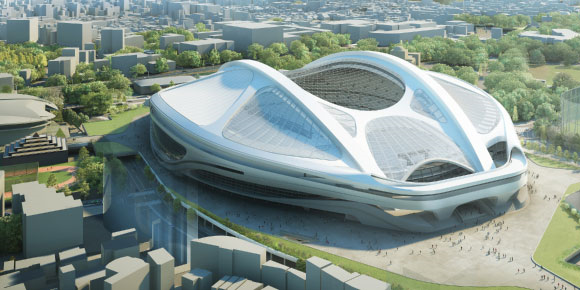
I’ve got nothing but love for Tokyo, and I’ve spent a good chunk of my adult life working and playing in Japan’s city of cities. Still, I remember having mixed emotions when it was announced as the site of the 2020 Olympics.
Like everyone at RocketNews24, I truly believe Japan is an awesome place, and I’m happy whenever something happens that gets people to take a peek at what’s going on here. But I was worried that in the run-up to the 2020 Olympics, Japan would embark on a glut of overly extravagant construction projects, building needlessly expensive stadiums that would fall into disuse or disrepair soon after the Games ended, as has happened in so many other host cities.
That certainly seemed to be what was happening with Tokyo’s New National Stadium. Every few months came a new report that cost estimates had been revised up yet again, and the expected price tag recently soared to 252 billion yen (US$2.02 billion). Finally, though, the Tokyo Olympics organizers have said enough is enough, and they’ve decided to toss out the existing design completely and start over from scratch.
Originally, the stadium wasn’t expected to be anywhere near so costly. Even before Tokyo was selected for the 2020 Olympics, there were plans to tear down the 54,000-seat National Stadium in Shinjuku Ward, the centerpiece the 1964 Tokyo Olympics, and build a new stadium on the same site. In 2012, a design from award-winning Iraqi-British architect Zaha Hadid was chosen.
The project started getting even more attention after the I.O.C. awarded the 2020 Games to Tokyo in September of 2013. But just three months later, Hadid was asked to revise her design in light of the high projected cost of achieving her original vision.
The revised plan still imagined an 80,000-seat stadium, though, which seems particularly ambitious in a city where the largest regularly held sports events are professional baseball games. Some also questioned the need for a planned retractable roof, especially once the estimated total cost ballooned to over 250 billion yen. Not only would that have been three times what London spent on its stadium for the 2012 Olympics, it would have been nearly double the amount Tokyo organizers originally believed Hadid’s revised design could be built for.
Tokyo’s Olympic committee and Hadid don’t agree on how costs mushroomed to such a startling extent. The architect’s design firm, London-based Zaha Hadid Architects, blames increases in Tokyo construction costs, as well as deadline difficulties. The Tokyo Olympic organizers, while admitting that the rising cost of building in Tokyo may have contributed to one-third of the increased estimated costs, point to design elements, such as a pair of difficult-to-build curved support arches, as the reason for some roughly 74 billion yen in additional funds that would have been required.
Hadid has also insinuated that resentment towards a foreigner’s design being selected contributed to the criticism her plan faced, calling out prominent Japanese architects who expressed their displeasure for it ,while working overseas themselves, “hypocrites.”
But more important than debatable accusations of nationalist pride is the fact that, for the most part, fiscal conservatism is seen as a virtue in Japanese society. With that in mind, it’s not so shocking that Tokyo didn’t want to become known as the city that built the most expensive stadium in Olympic history, and none other than Prime Minister Shinzo Abe himself broke the news that Hadid’s design has been scrapped, and that it’s back to square one in planning Tokyo’s new Olympic Stadium.
Starting over means that the original timetable of the New National Stadium being ready to open its doors in 2019 is no longer feasible. As a result, it will no longer be able to serve as one of the venues of that year’s Rugby World Cup, which Japan is hosting. It’s an unfortunate loss, but one that is likely to prove well worth accepting if the result is a new Olympic stadium that’s a better fit for Tokyo’s needs and budget, and also if Japan acts on its opportunity to take a leadership role in showing the world how to stage a responsible Olympics in the modern era.
Sources: The New York Times, Dezeen
Top image: Japan Sport Council